Adjusting the Sour Flavor in Sourdough Bread
This post may contain affiliate links. Please read our disclosure policy.One thing I wish I knew before I started making sourdough bread is that sourdough does not have to taste sour. Many people seek out sourdough for that distinctive “tang”, but as a baker you are responsible for adjusting the sour flavor in sourdough bread! You can change the flavor of your bread by the techniques you use. I love making some loaves with a tangy flavor and others with a more mild, mellow and even non-existent sour flavor. Sourdough really is a method of leavening…not just “sour bread.”

The Science Behind the Sour Flavor in Sourdough Bread
Sourdough is a process where fermented flour and water are used to raise bread. This is done by using a ripe and active starter to mix into bread dough. The dough goes through a fermentation cycle until it is ready to rise and bake. A sourdough starter is made up of wild yeast and bacteria working together.
Wild Yeast: The wild yeast cause the dough to rise by creating carbon dioxide gas bubbles that get trapped in the gluten strands of the dough
Bacteria: Lactobacillus bacteria predigest and ferment the starches in the flour, which provide the sour flavor in sourdough
- Lactic Acid: provides more mild yogurt-like flavors in sourdough
- Acetic Acid: provides sharp, tangy flavors in sourdough
The bacteria is where the sour flavor is coming from! Lactic Acid Bacteria are most active in the mid 80-90 degrees F, but that speeds up the wild yeast which prefer a more mild temperature of mid 70s F. Learning to balance the fermentation with the rise of the dough is one of the nuances of sourdough.

With the science in mind, check out the tips below to get the flavor of the bread you are looking for, whether that’s mild or sour

My sourdough bread is not sour. I want more sour flavor. What can I do?
- Keep the dough temperature higher: Lactobacillus perform well at the higher temperatures of 85-95ºF. Keeping the dough in that range will produce more acetic acid bacteria resulting in a more sour loaf. Be careful to watch for a quicker rise if you choose to use a higher temperature.
- Use more whole grains: Whole grains (especially whole wheat) have more microorganisms in the flour and their unique makeup encourages the production of more bacteria than a white flour—resulting in a more sour loaf.
- Longer Bulk Fermentation: I typically don’t let my bulk fermentation go over 4 hours (at 78ºF), but for a more sour loaf you could push that fermentation another hour or so. A cold bulk fermentation can be kept in the refrigerator for a couple days. Be careful in over-proofing the dough if you choose this method. The longer your dough bulk ferments, the more sour it is.
- Use Starter Later: Use starter after its peak. It will have risen, doubled in size and is starting to fall back down. The yeast are still active at this stage but more bacteria are present, and the starter smells much more acidic. A larger amount of bacteria will develop resulting in more sour flavored bread.
- Smaller Amount of Levain: Use a smaller amount of levain in your recipe. This will decrease the overall ph and give a more sour flavor to your bake.
My Sourdough bread is too sour. I want a more mild flavor. What can I do?
I love the sour flavor from some sourdough bread but my kids don’t always share that love. If you’re looking for a mildly or non-flavored sourdough, try some of these ideas:
- Keep the dough temperature lower: Lactic acid bacteria are most active in the higher temperatures of the mid 80s-90sºF. Keeping the dough in the 76-78º F range will still ferment and produce bacteria but will encourage lactic acid bacteria instead of acetic acid bacteria resulting in a more mild flavored loaf.
- Use less or no whole grains: Whole grains (especially whole wheat) have more microorganisms in the flour and their unique makeup encourages the production of more bacteria than a white flour—resulting in a more sour loaf. White flour or bread flour doesn’t have as many microorganisms and result in a more mild flavored loaf.
- Shorter Bulk Fermentation: I typically don’t let my bulk fermentation go over 4 hours (at 78ºF). The longer your dough bulk ferments, the more sour it can be.
- Use Starter Earlier: Use starter right at its peak. It will have at least doubled in size. use it before it starts to fall. This favors lactic acid bacteria resulting in more mild flavored bread.
- Larger Amount of Levain: Use a larger amount of levain in your recipe. My sourdough sandwich bread takes this approach, using more levain to get a mild flavored loaf of bread.
Get started with Sourdough:
Sourdough Beginner Guide
Want more in-depth Sourdough instruction?
Check out my online sourdough classes or take a class in person.

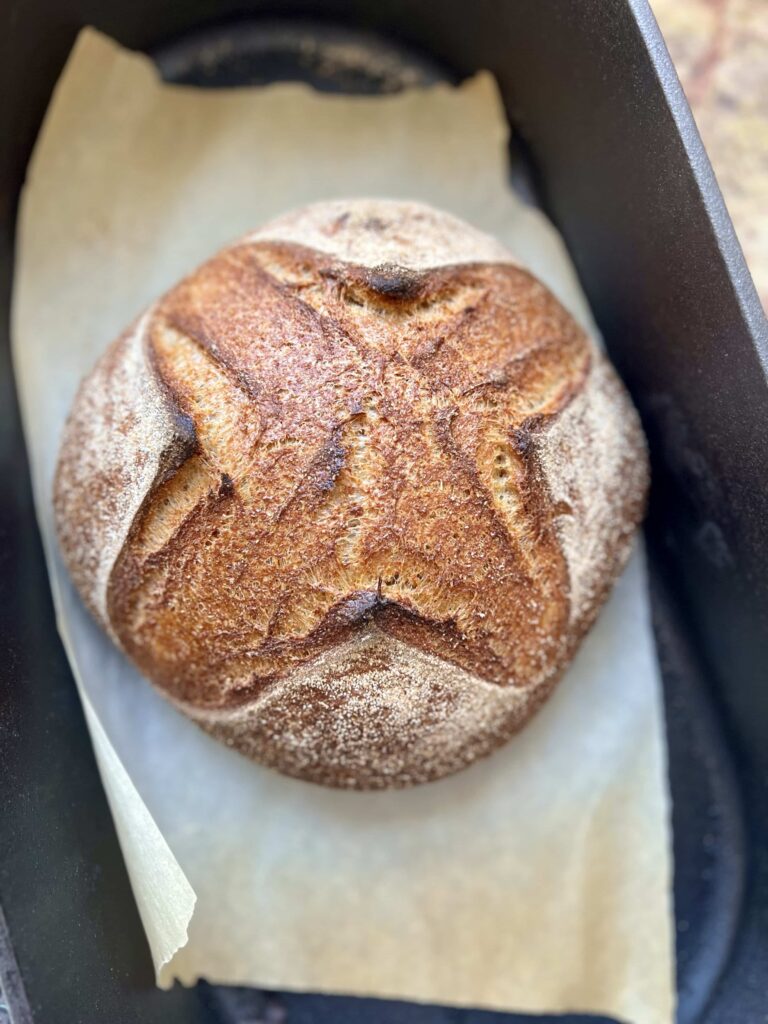
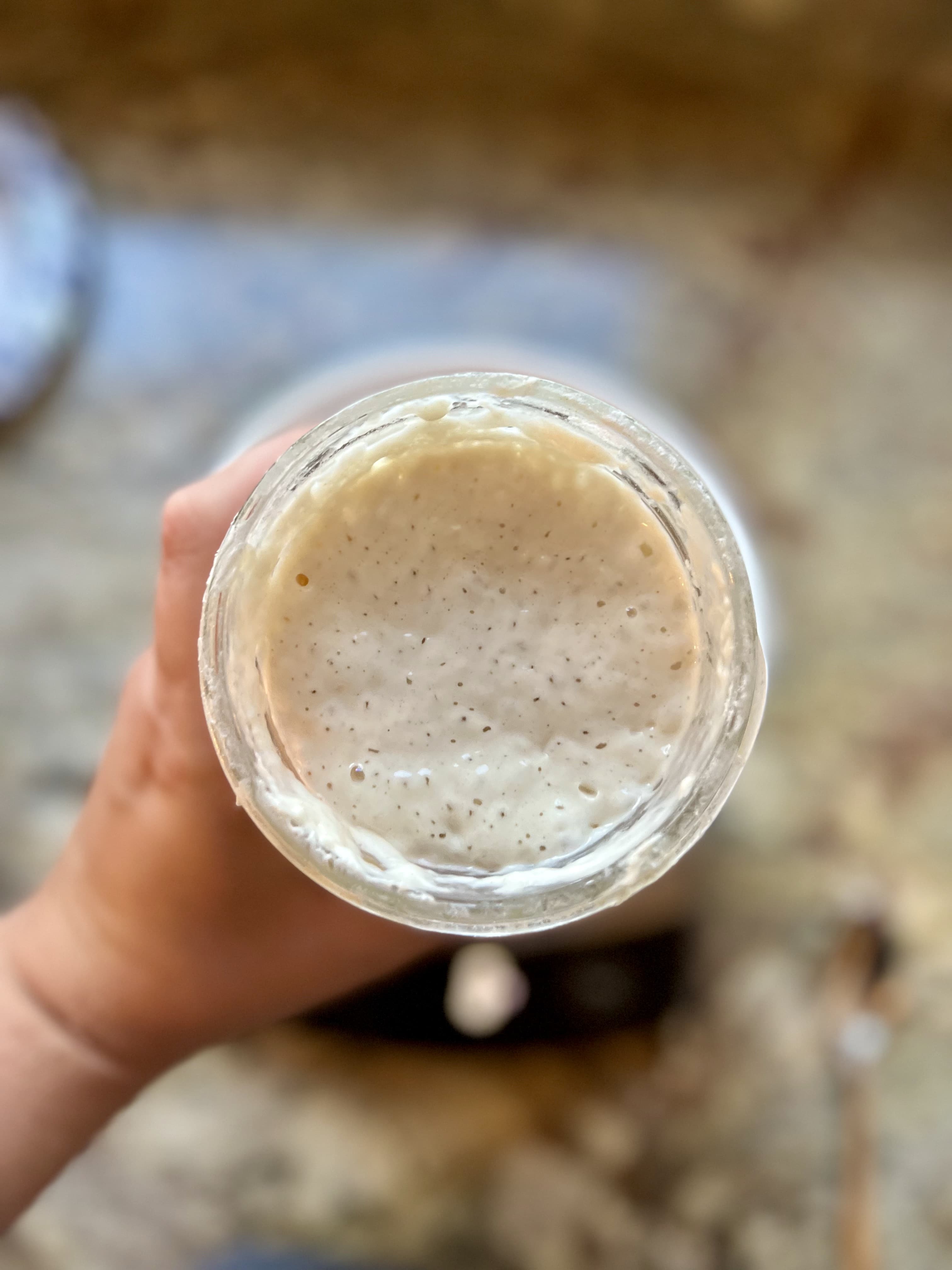
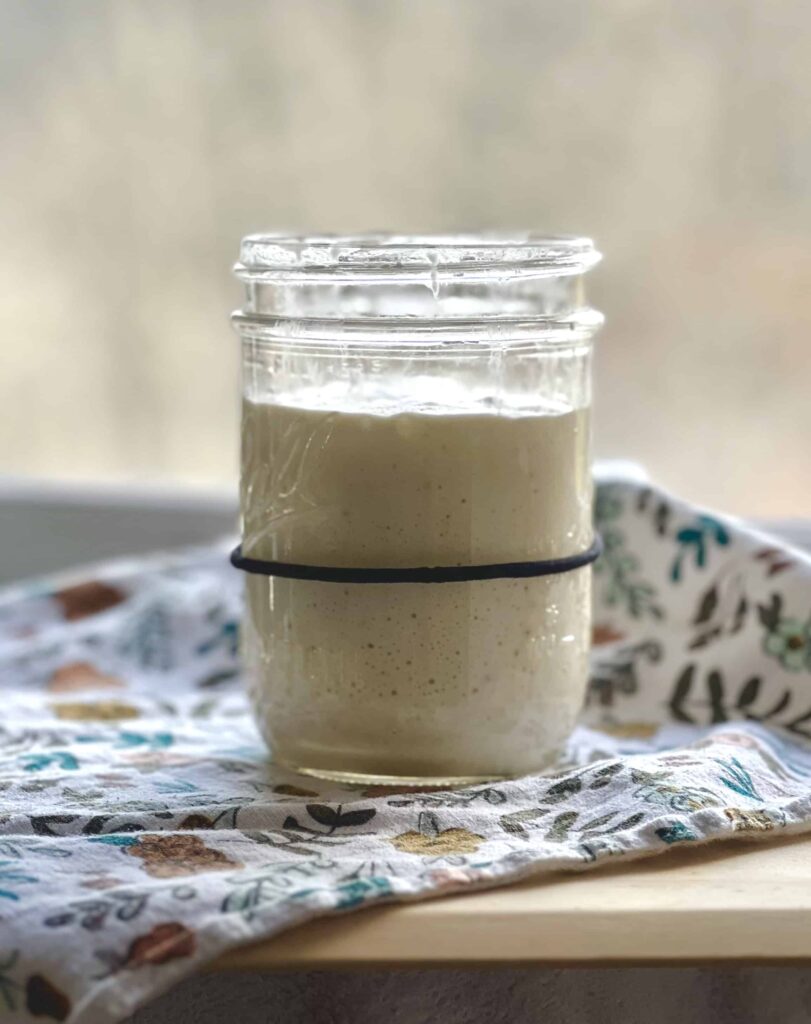
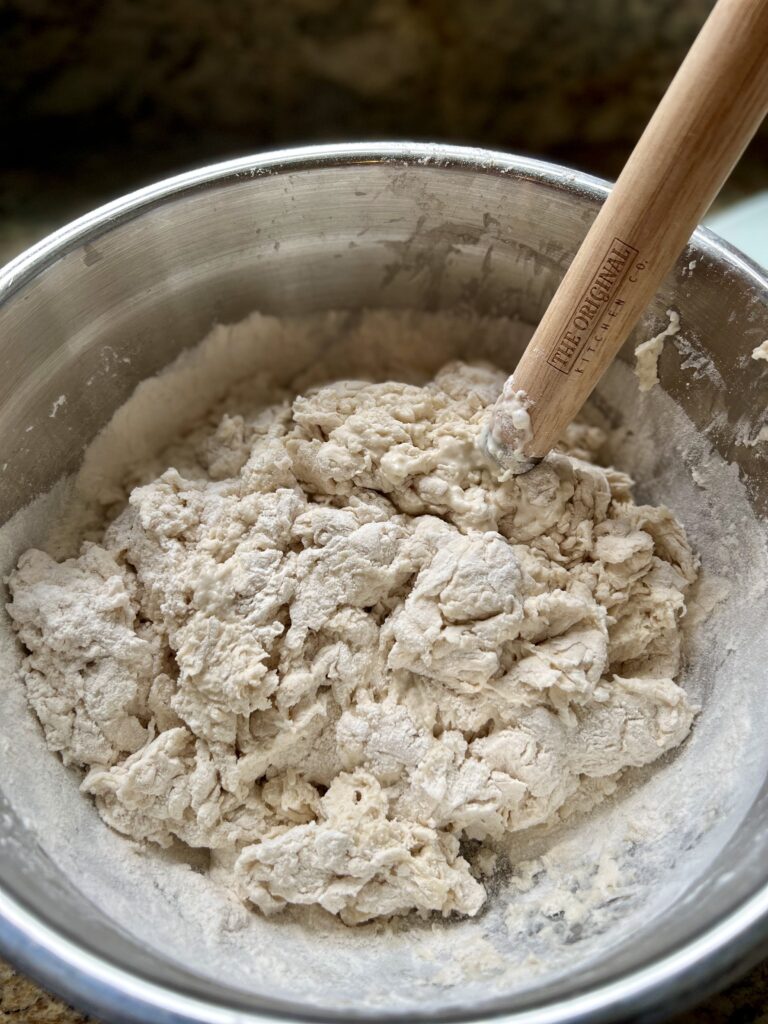
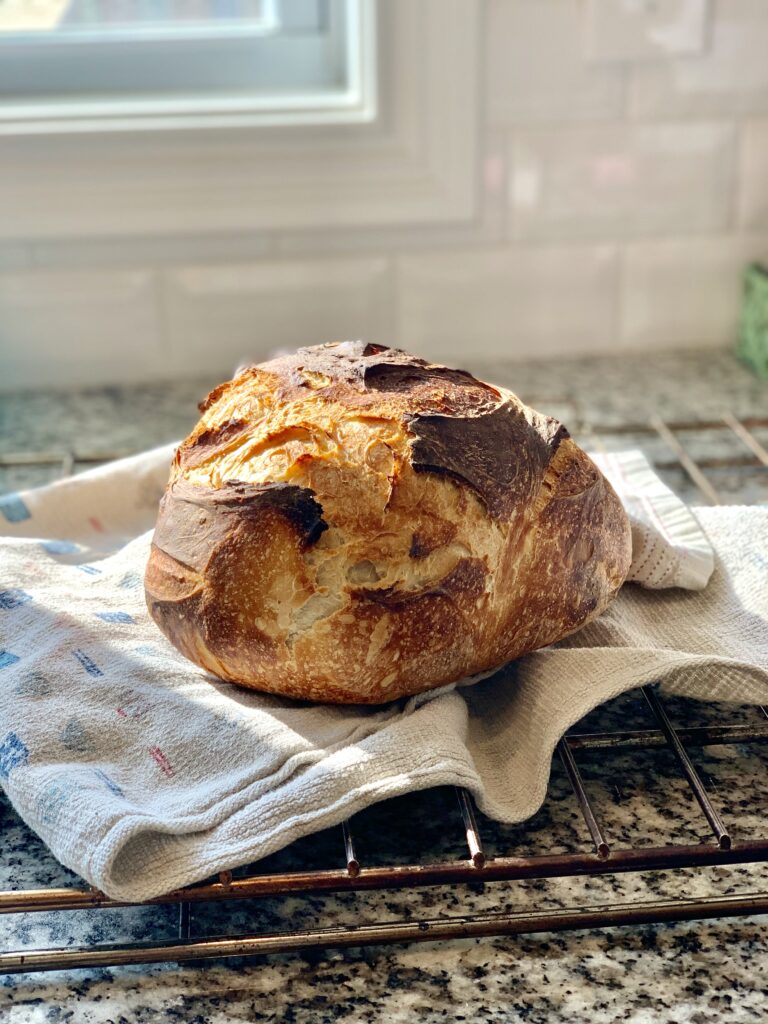
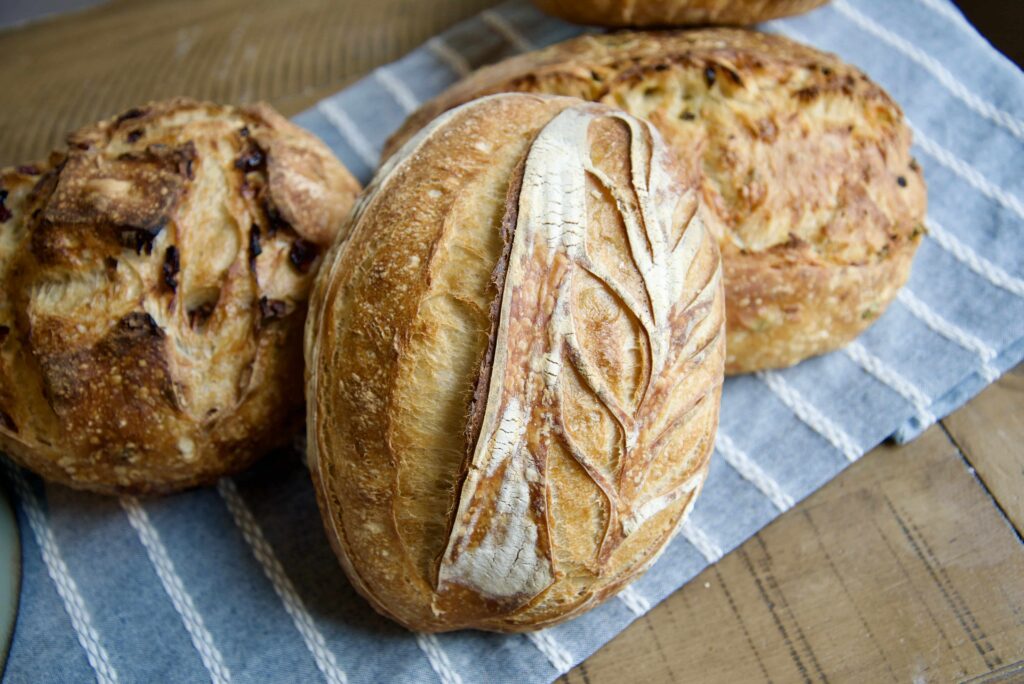
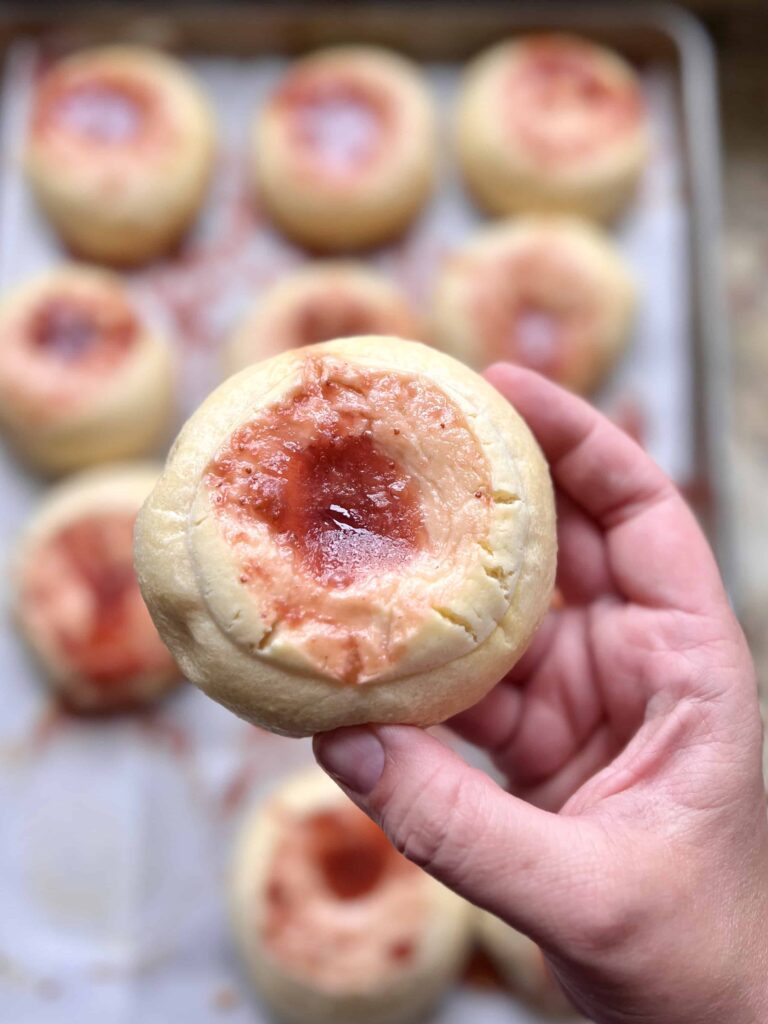
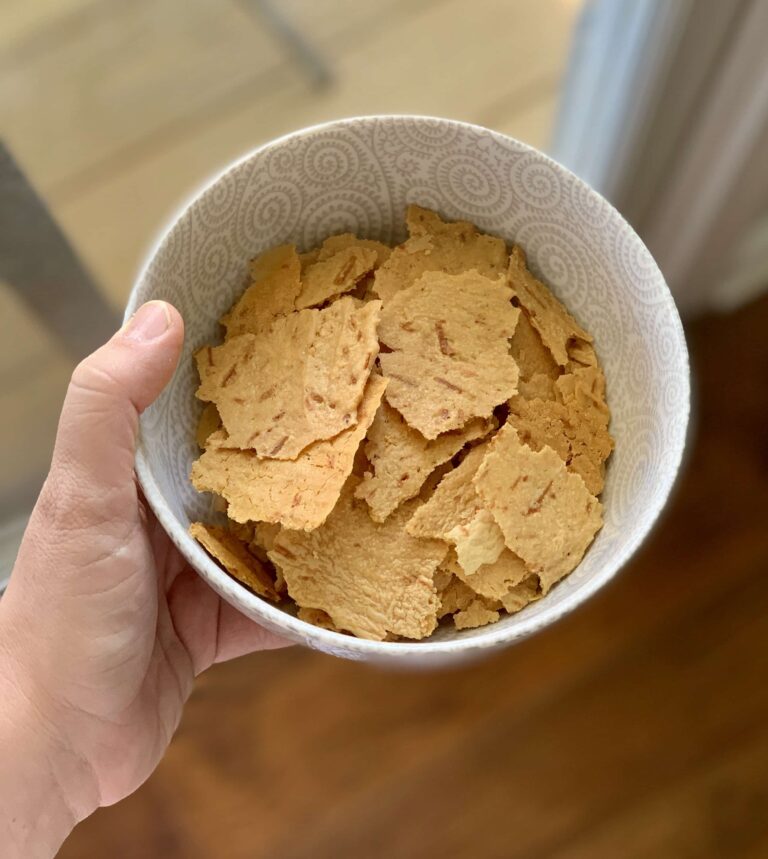
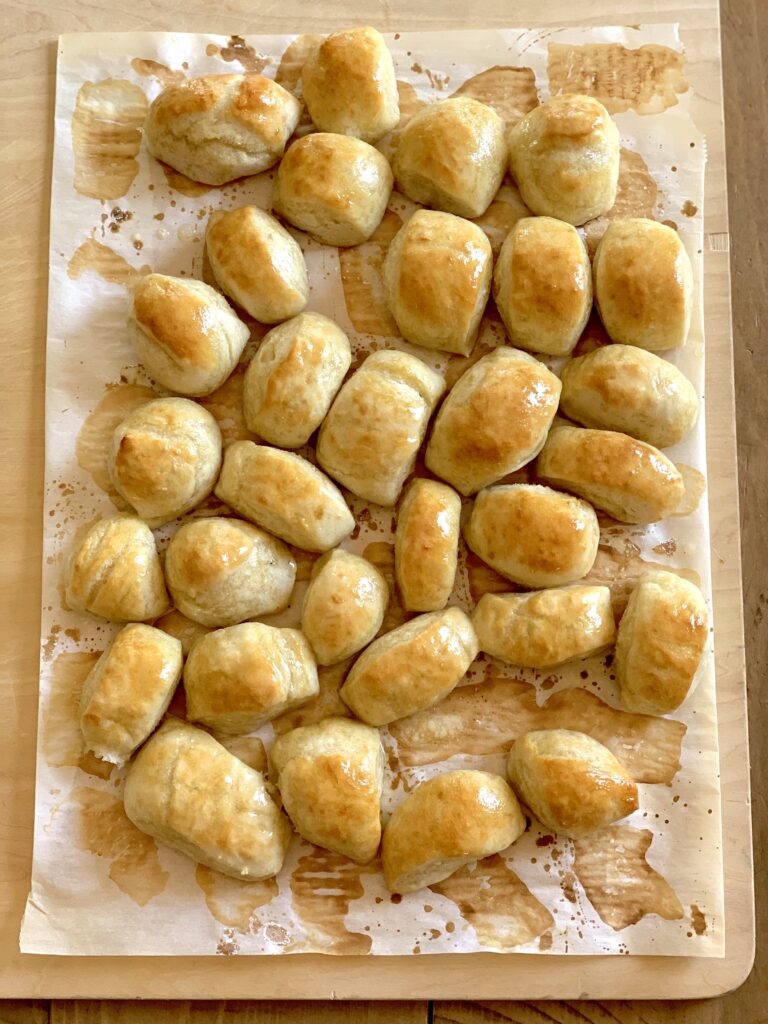
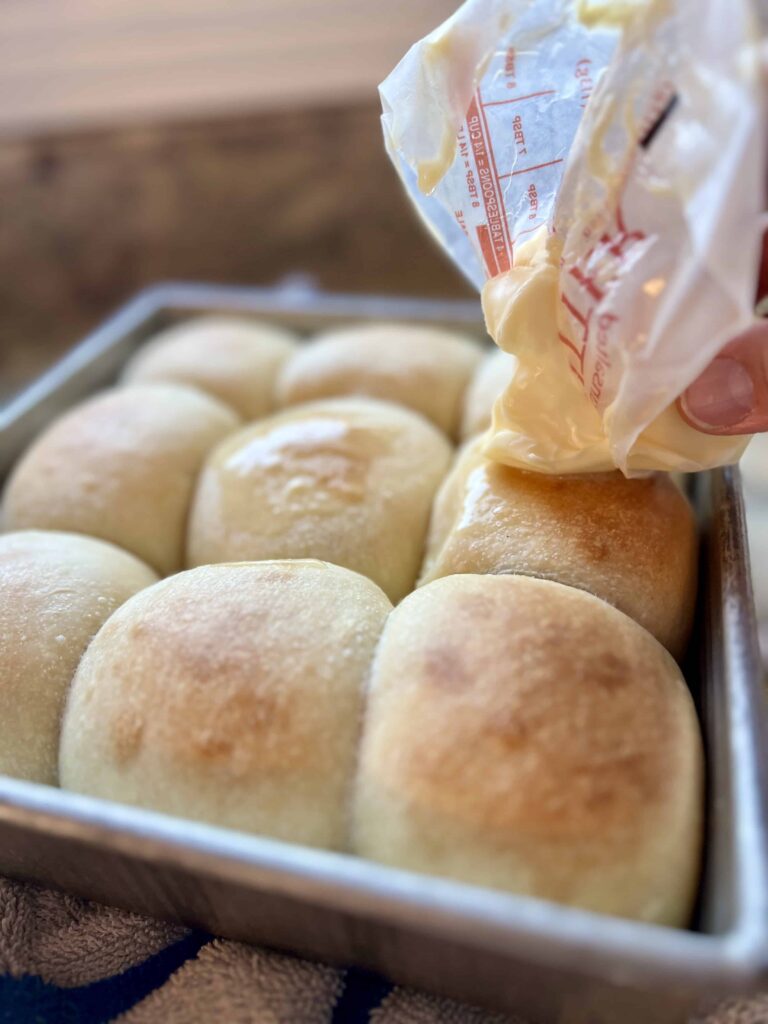
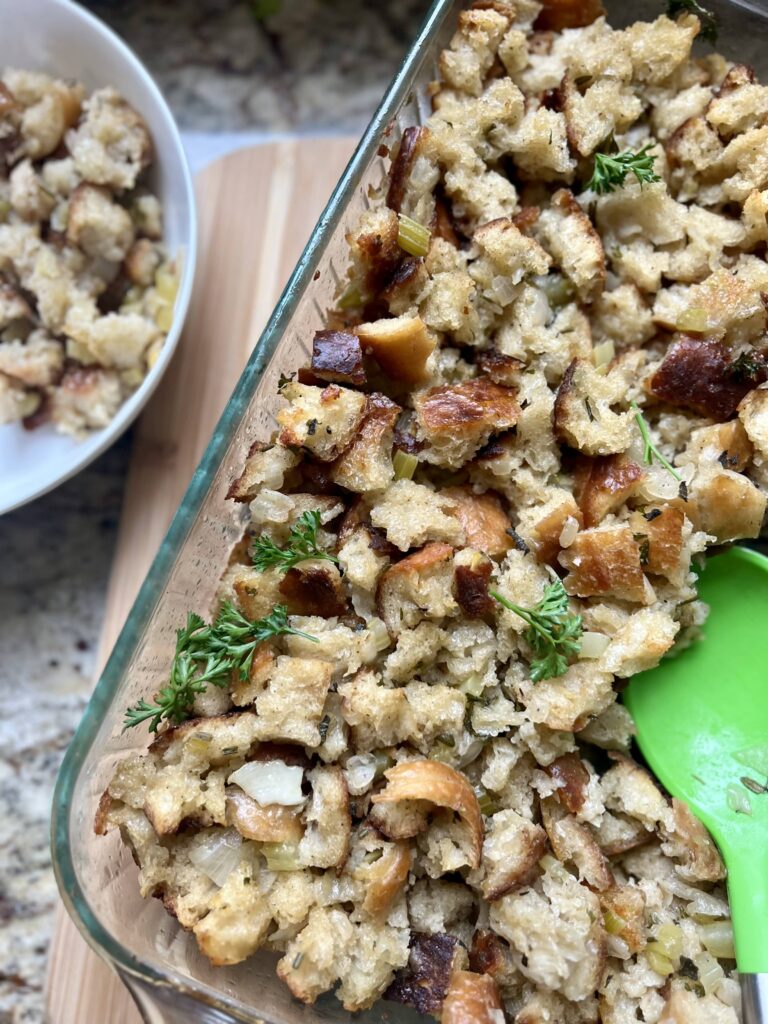
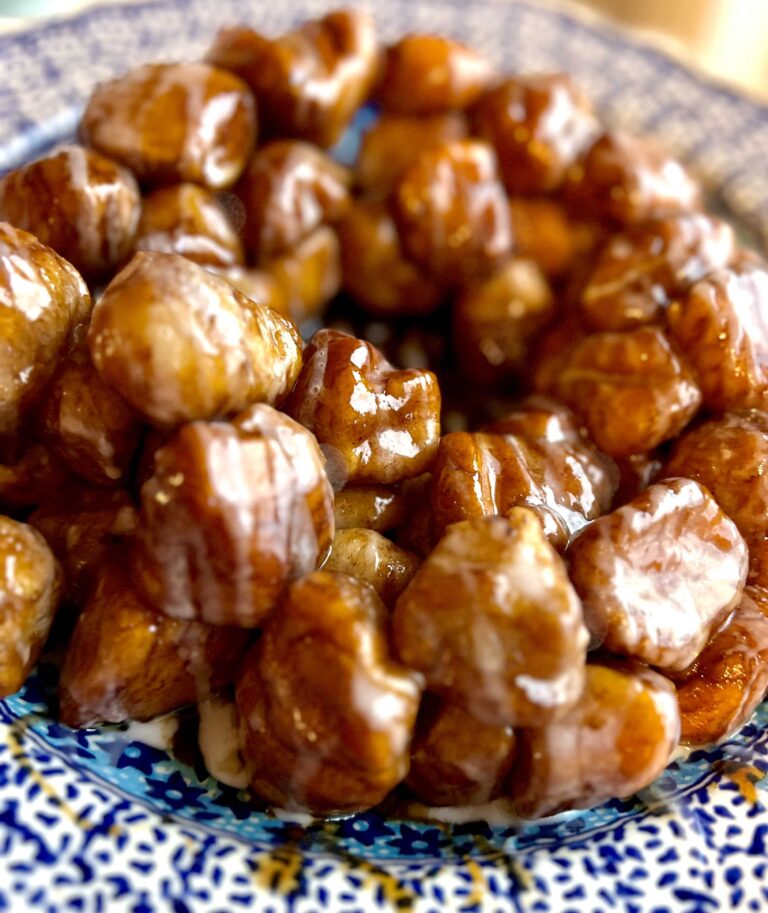
What if I don’t like the sour flavor but I want the nutritional benefits? Will discouraging the bacteria in favor of the yeast decrease the pre-digestion of gluten, and/or deactivation of phytic acid?
You will still get the health benefits from the bacteria even if it’s not sour. The bacteria is actively working with together with the wild yeast during the fermentation. Will you get more benefit the more sour it is? I can’t say for sure. Some people say yes, others no. I don’t think of sourdough as a flavor but as a leavening process. In that process the bacteria and the wild yeast work together to leaven the bread. You can make that process work for you and ultimately impact the flavor based on fermentation time.